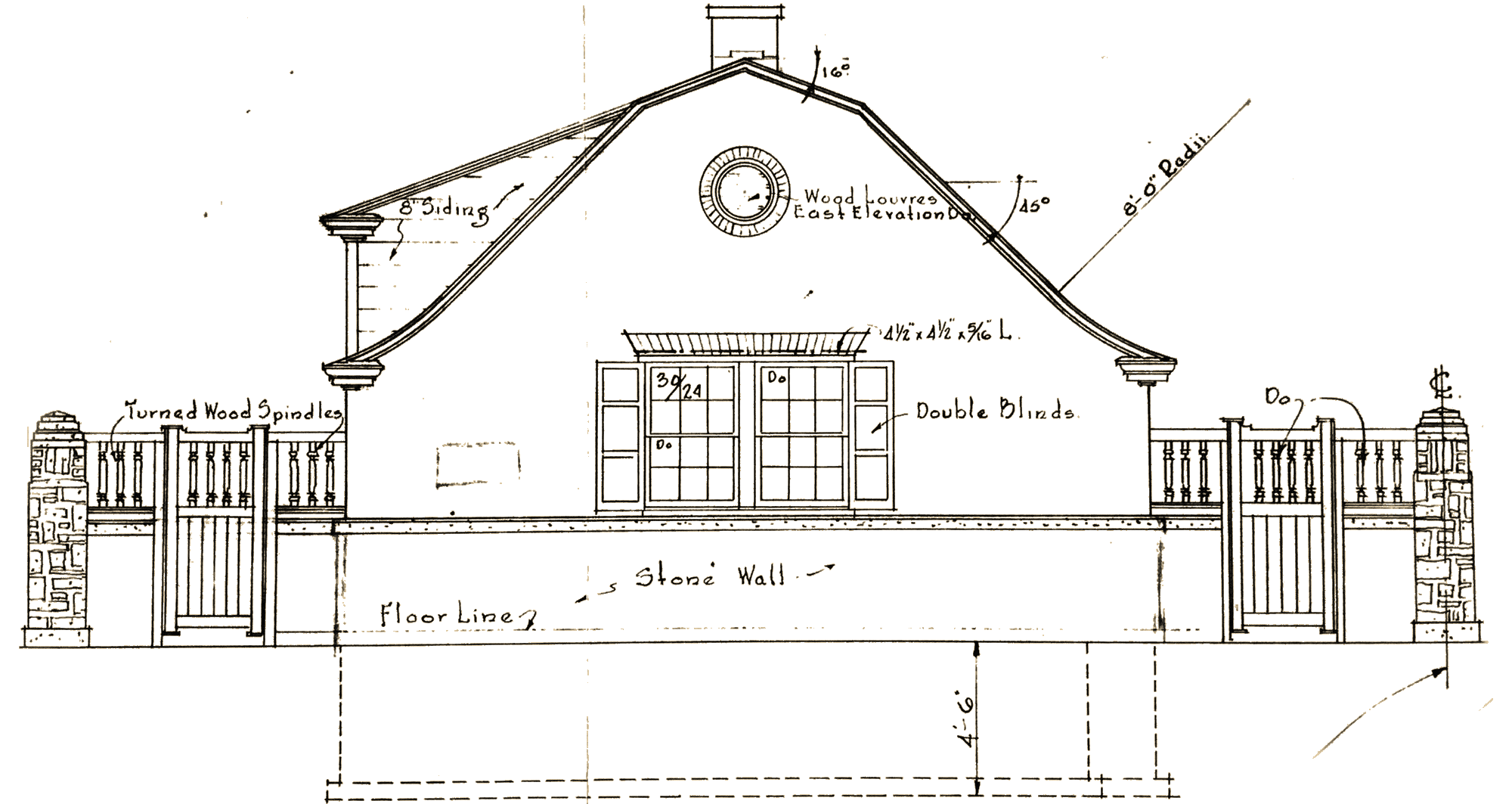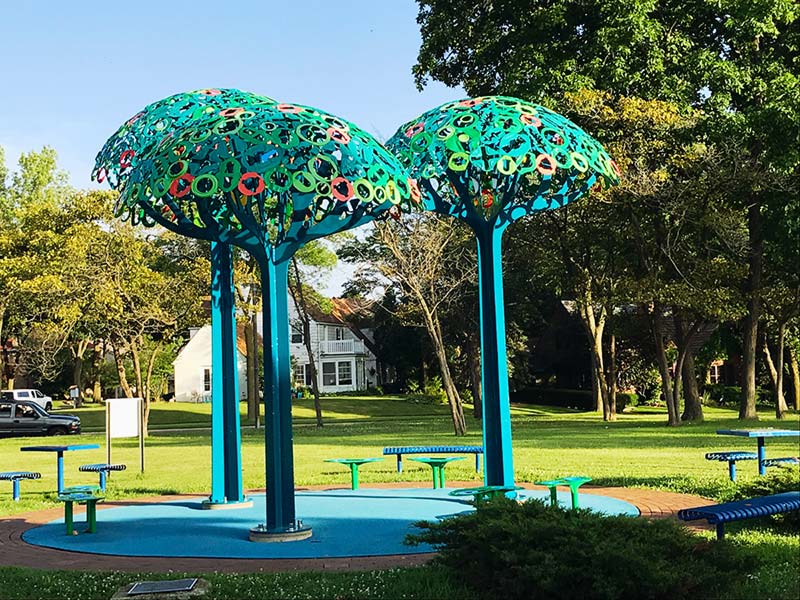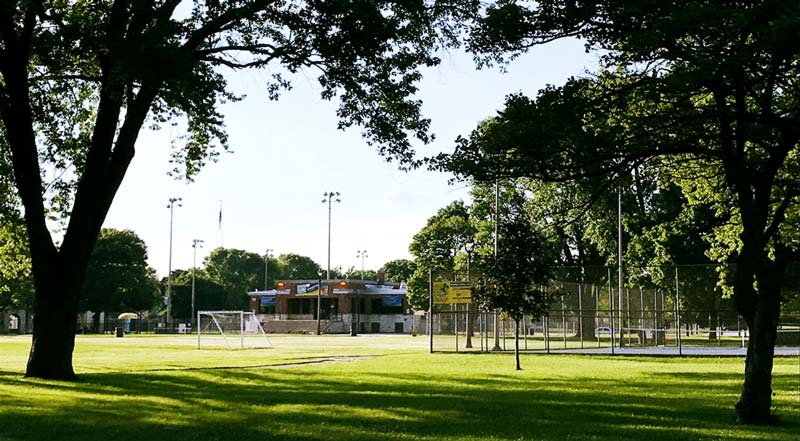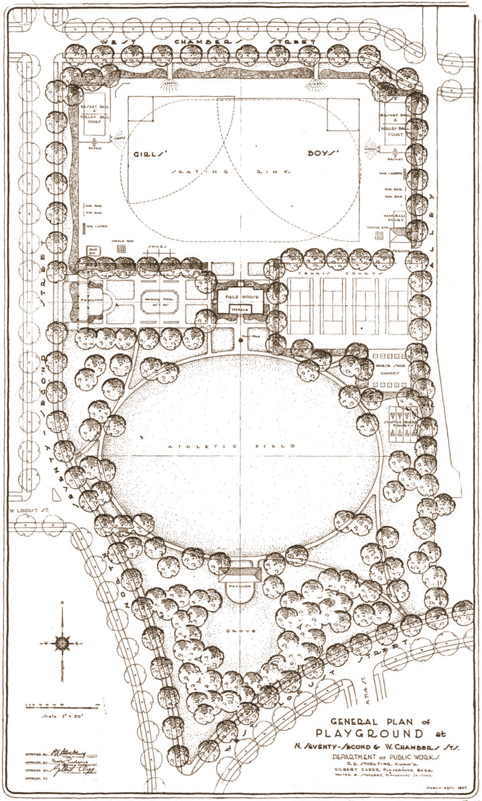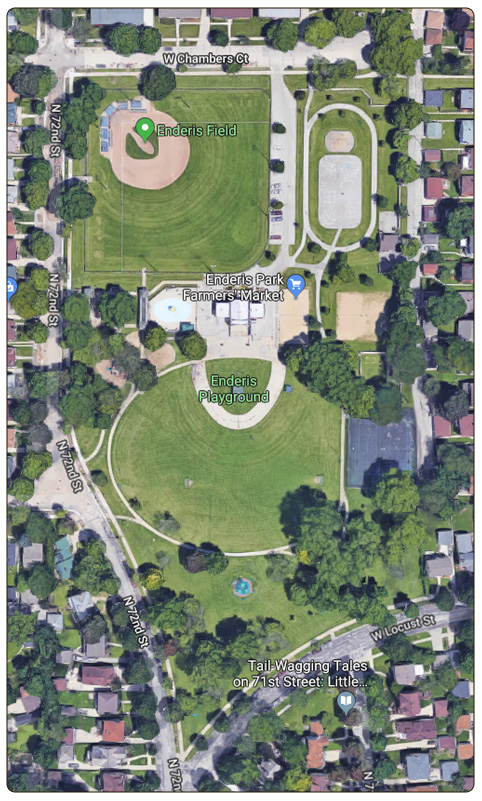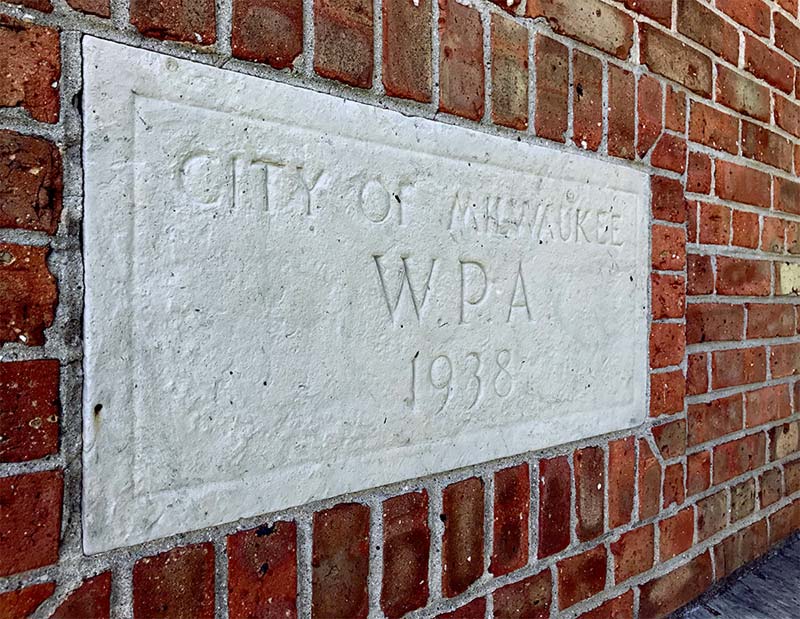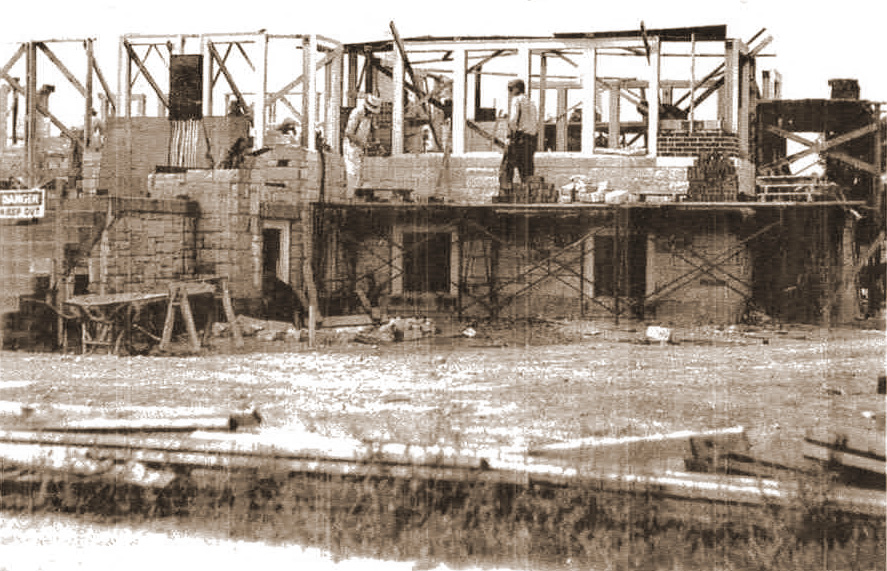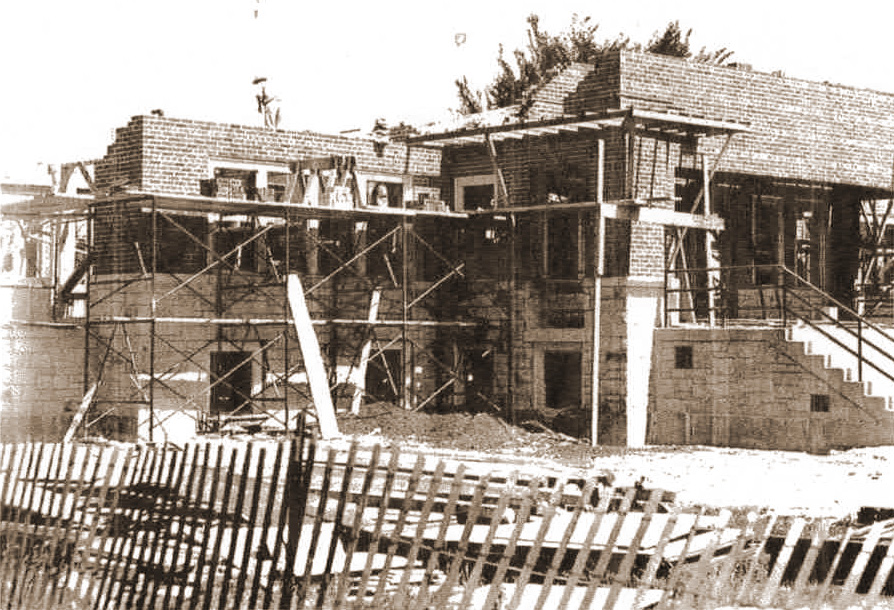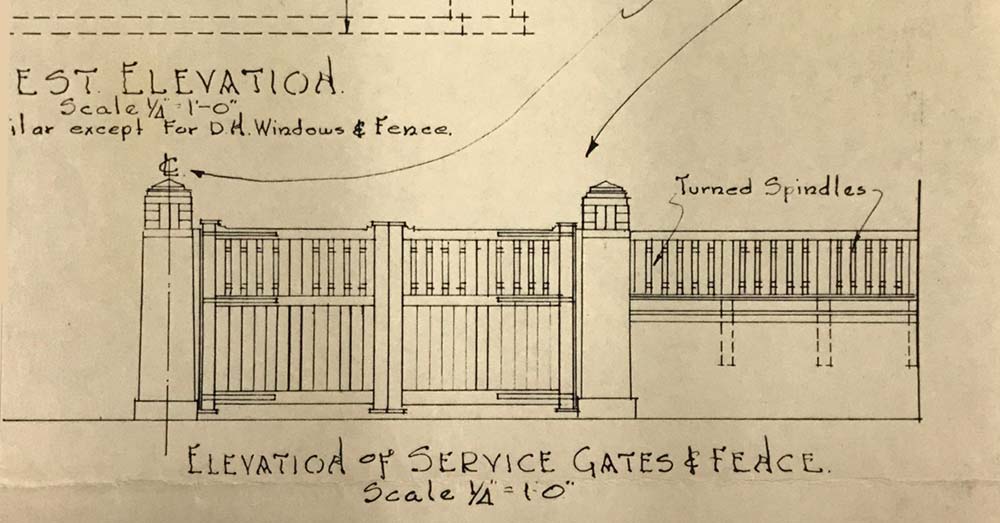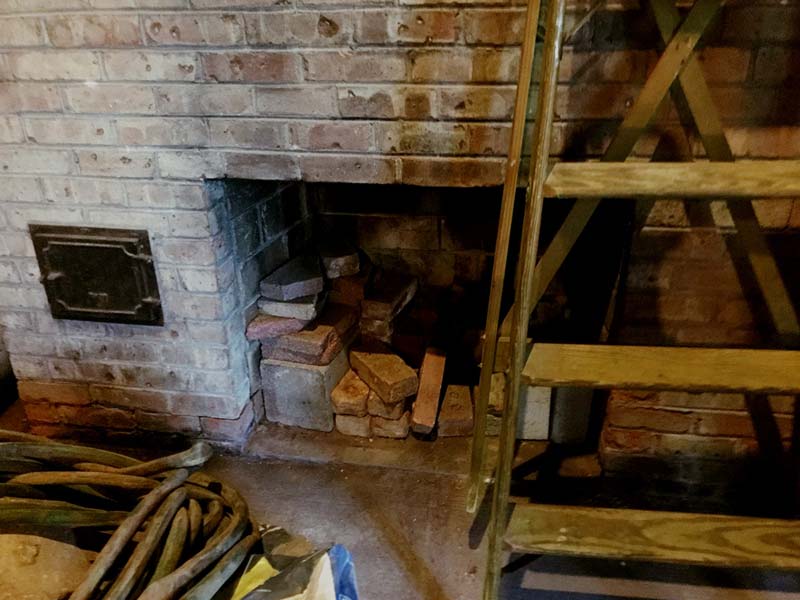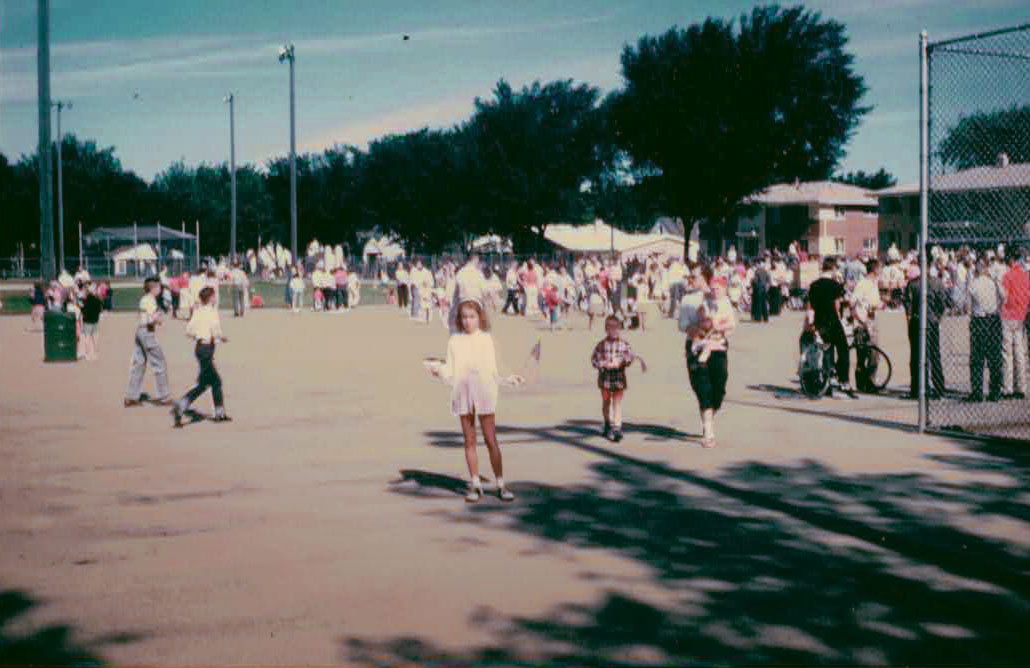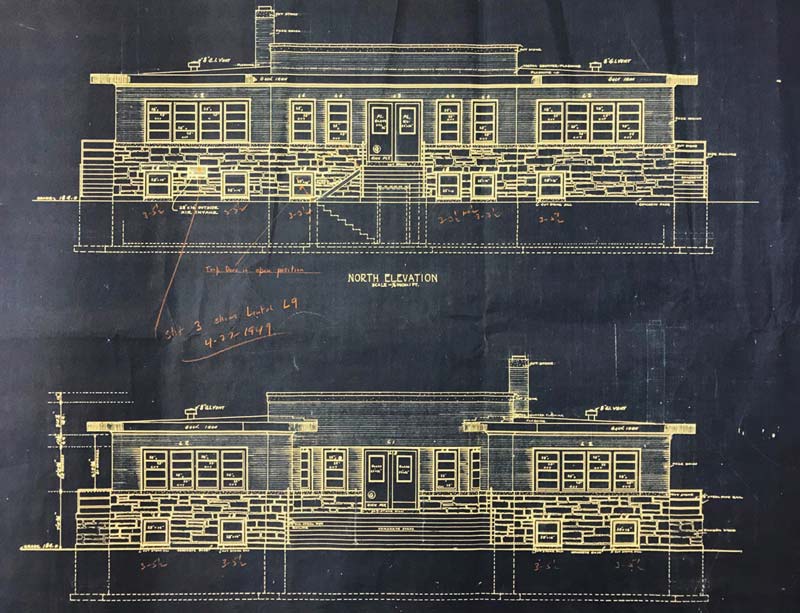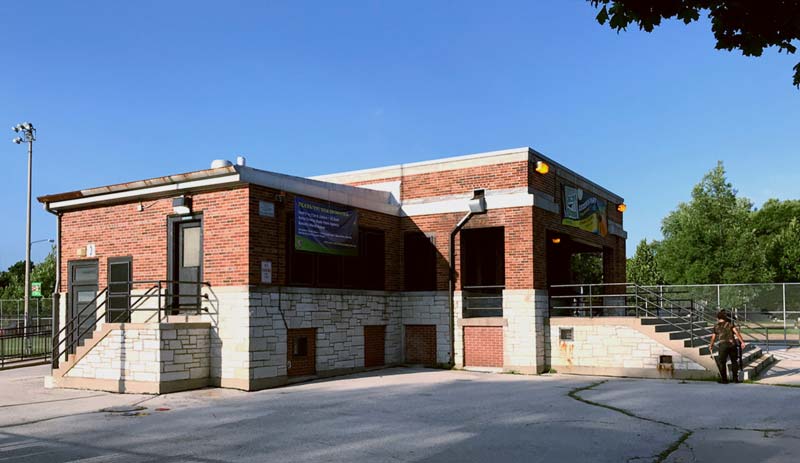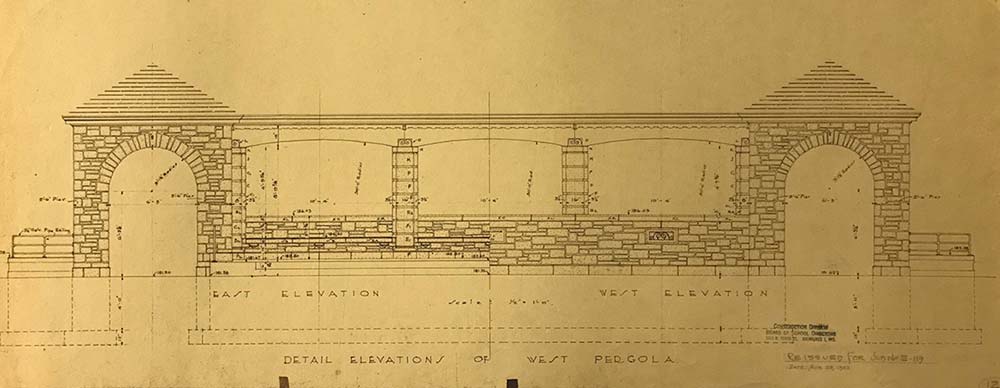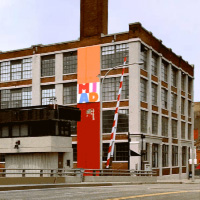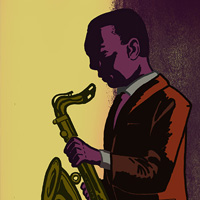In addition to the so-called "green necklace" of Milwaukee County Parks draped so alluringly around metro Milwaukee, Milwaukee Public Schools owns 52 neighborhood playfields that add a dose of green space – and fun – to some Milwaukee neighborhoods.
One of those is Enderis Playfield, a New Deal-era gem bounded by Chambers and Locust Streets on the north and south, 72nd Street on the west and an alley (behind 70th Street) on the east. The park has given its name to its neighborhood, too. It is the green heart of Enderis Park.
With a baseball diamond, a splash pad, a playground, tennis courts, volleyball pits, a short running track and other amenities – including a "Magic Grove" of colorful metal trees by artist Nancy Metz White (a similar "Tree of Life" is in Mitchell Boulevard Park (on Bluemound Road) – the park has something for everyone.
In summer, the leafy green park is especially alive with a weekly farmers market, concerts on select Thursday nights, softball and kickball games on the diamond, day care groups making use of the playset and a full slate of events on July 4. Often, large groups hold picnics there, too.
Thanks to a blend of single-family and duplex homes and multi-family apartment buildings, the neighborhood is ethnically and culturally diverse and so is the park, which has its roots in the earliest days of the neighborhood.
What's a playfield?
Although it was typically referred to as a playground in its earliest days, Enderis is now designated a "playfield." What's the difference, you ask?
According to a 2001 report by the City of Milwaukee, called "Public Outdoor Recreation Plan for City of Milwaukee Neighborhoods 2001-2005," a playfield is primarily aimed at children 15 and up (though Enderis also has a tot lot and splash pad clearly suited to children much younger), has a minimum size of 10 acres (though many are, in fact, smaller), is typically situated in the center of the neighborhood served and has 1.25 acres per 1,000 people in the area served.
It typically has organized sports, tennis, a "landscaped periphery" and a fieldhouse or shelter.
While the City is responsible for the acquisition and development and playfields, MPS is responsible for their maintenance and supervision.
Playgrounds, meanwhile, are acquired and developed jointly by MPS and the DPW, and maintained and supervised by the school district. They are typically aimed at children ages 5 to 18 (school age kids, that is) and can be as small as three acres, and, most often, they're adjacent to schools.
Enderis Playfield covers 10 acres, which puts it somewhere in the middle in terms of size. While others can be as small as four acres (like Carmen, Custer, Lewis and Metcalfe ... Pulaski Playfield, nestled in just north of Brady Street, is a mere two acres), many are around seven or eight. A couple are much larger: Wick is 22 acres and Vincent 29.
"By the close of the '20s, 30 playgrounds were in operation to fulfill (directory Dorothy Enderis') goal of a playground within walking distance of every child," notes an unidentified manuscript at MPS.
Enderis took the playgrounds' role in the lives of Milwaukee children seriously and that was manifested in the "playleaders" assigned to each location.
"The importance of leadership and training emphasis for employees was evidenced in the Saturday morning playground classes, or institutes as they were called. Attendance at the Institute was mandatory, and a requirement of the job. As Enderis jokingly said but actually meant, 'the only excuse for absence at a Saturday session was one's own death.'
"Competition in the '20s and '30s for playleader positions was especially keen because thousands of Milwaukee's young men and women looked forward to assistance in financing their (college) education through summer playground work."
At these playgrounds, as well as at schoolyards at many MPS buildings, children engaged in a wide range of activities, including games and sports of all kinds.
Beginnings
The land upon which Enderis Playfield was developed was once farmland owned by E.C. Smith, a justice of the peace in the Town of Wauwatosa, which is where his land, which ran from 68th to 72nd Street, was then located.
Born in Deerfield, Massachusetts in 1817, Erastus Smith arrived in Wauwatosa in 1850, where he became deeply involved in the Wauwatosa Circle of the Lake Shore Baptist Church Association, with which he remained close until his death in 1884. Married twice, Smith fathered seven children. He's buried in Wauwatosa Cemetery, not far from the park.
When a small cluster of buildings, including the Five Mile Inn, popped up at the intersection of Lisbon and Burleigh, it was named Smithville.
By the early 1920s, the land had been platted as the Gale Crest Park subdivision. You can read more about that history here. In 1927, the area was annexed by the City of Milwaukee and as homes had begun to dot the landscape (building would continue through the 1930s, but it was after World War II that the neighborhood building boom really set in), the City began to consider creating a park before all the land was developed.
According to John Gurda, who profiled Enderis Park in his voluminous "Milwaukee: City of Neighborhoods" book, Enderis conducted a study of the city's playground needs, including in Gale Crest Park subdivision.
"Enderis and her colleague, playground engineer Gilbert Clegg, submitted a full menu of proposed recreation sites to the Common Council, and it included the square block bordered by North 71st and 72nd Streets between Chambers and Locust, even though practically no one lived there yet. ... The Recreation Division was authorized to purchase the land in 1928, but the initial asking price was too steep. Then came the Depression. In 1931, the real estate market in free fall, the parcel's owner was only too glad to settle for much less and Milwaukee acquired some adjoining lots for back taxes.
"Facing shortfalls of its own, the city was in no hurry to develop the property. 'This site was acquired well in advance of the need of a playground in this neighborhood,' reported the Department of Public Works in 1932, 'and the complete improvement thereof is not recommended at this time'."
That changed when federal money became available as the decade progressed. In the late 1930s, plans were drawn and a variety of park structures were built by the Works Progress Administration, part of Franklin Delano Roosevelt’s New Deal, which provided work for the unemployed during the Depression.
Among the other WPA works in the Milwaukee area were the South Shore Park Pavilion, an addition to Carleton School, the Cherry Street Bridge (designed by Charles Malig), the original Gaenslen School and Hawthorne Glen Nature Center.
But projects like Enderis Playfield were a local trademark of the WPA, according to The Living New Deal website.
"The most visible legacy of WPA projects in Milwaukee County was the parks system, which had more construction and landscaping during the WPA period than any other time in its history," the site notes.
"WPA construction included six swimming pools, pavilions at Red Arrow and Brown Deer Parks, service buildings at Jacobus, Jackson and Whitnall Parks, the Botanical Garden administration building and golf club house at Whitnall Park, a bathhouse at Doctor’s Park, a recreation center at Smith Park, new roads in nearly every park and parkways throughout the county."
As early as 1928, the west side playfield appears in annual reports for the playground division. The following year, the department planned to acquire more land for the park, as authorized by the Common Council.
In 1931, the department was authorized to purchase land at the site for $17,500, though in the end it appears the city paid $20,000 for a 5.372-acre parcel and another $3,000 for a piece just a tad over an acre. A remnant of land on the southeast corner of the property was traded for another "on the east side of N. 71st St."
In November 1936, Gilbert Clegg, the city’s playground engineer, announced a short list of work to be completed in 1937, including an expansion of the Fourth Ward Playground at 19th and Kilbourn, a new fieldhouse at the Kinnickinnic Playground at KK and Nevada (pending WPA funding), fencing at Mount Vernon Playground at 65th Street and the continuation of work at two parks: one at the Parklawn housing project and the other at the playground at N. 72nd and West Chambers Streets.
In the 1937 annual report, Clegg wrote, "the most important WPA playground project now underway is the improvement of the enlarged playfield at North 72nd and West Chambers Streets. Much of the underdraining is in, the rough grading is done, a concrete wading pool has been built and a retaining wall and service building (in the photos above; a photo of the fireplace inside is below) are under construction."
In October 1938, four tennis courts were being installed in the park as part of work to add 19 to playgrounds across the city, bringing the total up to 75.
Dorothy Enderis
Born in Elmhurst, Illinois, on July 23, 1880, Dorothy Enderis moved to Milwaukee with her family the following year. She was a member of the first graduating class at West Side High (later West Division and now Milwaukee High School of the Arts) in 1898. She then attended the Milwaukee Normal School, earning a two-year teaching teaching degree in 1901.
Enderis was an assistant librarian at the Normal School for seven years, from 1902 until ‘09. After teaching fourth grade at the Fifth Ward School beginning in 1909, she was hired as an assistant to Harold Berg, who was named director in 1912 of the new MPS Extension Department, which ran the district’s social centers, adult education programs and playgrounds.
In 1920, Berg moved to Cleveland to do similar work there and Enderis became director of MPS’ recreation division – as well as an assistant superintendent – positions she held until October 1948. During her long tenure, Enderis – who was fond of saying, "during working hours a man makes a living; during hours of leisure, he makes a life" – greatly expanded the department.
In addition to expanding social and gymnasium centers in the schools, she boosted the number of supervised playgrounds in the city in the first eight years of the 1920s from 18 playgrounds to 72.
Enderis retired in 1948. One of the many projects completed under her long tenure was the Chambers Street Playground.
On Sept. 17, 1950, Enderis was joined by MPS Superintendent Harold Vincent, neighborhood alderman Clarence Heiden and other dignitaries as the playfield was turned over to MPS and dedicated in her honor.
"With fanfare and song," reported the Milwaukee Sentinel, "Milwaukee Sunday turned over to the School Board the Dorothy C. Enderis Playground, N. 72nd and W. Chambers Sts., the city's 21st large playground not connected with a school. Nearly 1,000 spectators sat on benches or stood in the sunshine during the dedication ceremony, in the park area of the 9.7-acre facility."
The Florentine Opera Co., Jackson Chorus, Civic Light Opera Co., an orchestra directed by John Anello and the All-City Dance Group folk dancers performed and Vincent officially accepted the park from Heiden.
"At the climax of the dedication," the paper wrote, "children carrying flowers, looped together with gold ribbon formed a triumphal avenue and Dorothy Enderis walked onstage on the arm of Mayor (Frank) Zeidler."
Zeidler said, "There dwelt giants in the land in those days, the days when Dorothy Enderis was nurturing what is now becoming known throughout the world as America's basic folk culture. Giants with such names as Whitnall, Bruce, Seidel, Enderis.
"The work Miss Enderis did in her 37 years at the head of our Municipal Recreation Department was an important part of the beginning of a process by which America is known for more than her industrial prowess and her ability to defend her interests in war. Future generations will honor Miss Enderis, and call her blessed."
Enderis died July 11, 1952. A building on the UW-Milwaukee campus also bears her name.
Gilbert Clegg
A key figure – perhaps THE key figure – in the realization of Enderis Playfield was Gilbert Clegg.
Born in Philadelphia in 1895, Clegg studied at Michigan State University (then College), and arrived in Milwaukee in 1924 to work as an assistant engineer for the Board of Public Land Commissioners. But the following year, he left to work for the Detroit parks system, returning to Milwaukee in 1926 as playground engineer for the city.
Along with Enderis, Clegg put together the city’s first comprehensive plan for playgrounds in the city and, according to an obituary in the Milwaukee Journal, "hundreds of thousands of dollars in playground bond issues were approved by voters and scores of playgrounds were built while Mr. Clegg worked as playground engineer – from 1926 to 1942. The playground plan was one of the first steps in comprehensive city planning and was a start toward the city’s first capital improvement program."
Clegg went on to work again for the Board of Public Land Commissioners and, later, the City Plan Commission, where he worked as a land use planner. Clegg was a busy man. During the war, he was the Milwaukee Civil Defense coordinator and he was the first to serve as secretary of the Milwaukee Parking Commission.
Clegg retired in 1961 and died of a heart attack three years later in Sun City, Arizona, where he’d moved with his wife Nina.
A great, green space
Fortunately, Enderis Playfield was built after 1925, because that’s when Clegg wrote in an article in the journal American Landscape Architect that greenery arrived in Milwaukee playgrounds.
"Trees and shrubs were not planted upon Milwaukee playgrounds until 1925," he wrote. "When acquired, the sites were usually devoid of trees, and as a result our playgrounds still look sun-drenched and lack that sense of dignity and repose that big trees impart. Every playground developed since 1925 has been planted with some trees and shrubs, and upon the more favored grounds the planting is beginning to have an effect. Trees surround the different play areas and outline vistas; shrubs hide the fences from the street and create a park-like atmosphere."
The park is verdant and full of intimate spaces, though there are a couple large, open spaces, including in the center of the oval track, which is paved and painted with world and U.S maps; the baseball diamond; and a large grassy patch that’s often the site of soccer games.
The main park building, a fieldhouse with restrooms, a community meeting room and other amenities – which is where most of the neighborhood also votes – was designed by the city's Charles Malig – who was responsible for many familiar buildings on the Milwaukee landscape – and erected in 1949.
What’s most alluring about Enderis Playfield, however, are its Lannon stone structures.
There’s that 1938 service shed, with its built-in handball court on its north side and a fireplace inside, and there are a pair of pergolas on the west side of the park, the beautiful stonework of which matches the look of low walls and path-flanking columns that can be seen throughout the park, like the ones that enclose the horseshoe pits. There are also a number of curvaceous stone benches that envelope sitters like a stylish deco couch.
The original drawings, credited only to a mysterious "W.E.S.," are themselves works of art.
The care with with which these elements were designed and constructed makes Enderis Playfield feel special and that is not lost on those who live near it and who are drawn to it.
"Sometimes the best of plans, the soundest construction, and earnest leadership fail to have a visible effect upon a community," Clegg wrote in his article in 1932.
"I have in mind one such playground in Milwaukee; the trees are dead, the fence is falling apart, and all trace of grass is gone. Probably the seed there is slow in germinating. But when a playground becomes the center of neighborhood interest, when its appearance is a source of pride to those using it, and the parents tell how much better behaved the boys of the neighborhood are becoming since the playground was built, there is a feeling of satisfaction in having contributed a part in creating it. There are such playgrounds in Milwaukee."
Yes, and one of them, surely, is Enderis Playfield.
"Neighbors see the park as the centerpiece or heart of the community," says Lori Sommervold, secretary of the Enderis Park Neighborhood Association. "I really believe the park is a huge draw for home buyers and renters of all ages. The park – and of course EPNA, which organizes all of the events – brings a sense of community.
"As Dorothy Enderis established the playfields as community gathering places during the Depression era, EPNA continues the tradition."
A master plan for the future
In May, MPS’ Recreation Department launched a plan to renovate and modernize all of its playfields, beginning with Burnham, Columbia, Custer and Southgate Playfields.
"With the help of local organizations, the business community, and residents, the goal is to level the playing field and transform neighborhood playfields, many of which were built in the 1920s and 1930s and have not been refurbished since their inception," the department noted in a statement.
In 2014, the department tapped a consultant to review the playgrounds and their neighborhoods, and create a $25 million, decade-long plan to bring all 52 parks not only up to date but to ready them for future needs, too, with a focus on economic and racial equity.
"We now have an equitable way to prioritize the renovation projects and truly level the playing field in our city," said Milwaukee Recreation Senior Director Lynn Greb when the plan was launched in spring. "By next summer, we will have four vibrant playfields that will have a profound impact on these neighborhoods."
MPS has allotted $11 million toward the plan so far and is seeking donations to help fund the rest of the cost. You can read the plan here.
